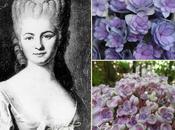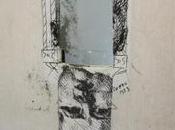
Sisters, 1868( Mary, Effie e Carrie Millais )
Il nome di John Everett Millais (1829 - 1896) è fortemente legato a quello della confraternita dei Prearaffaelliti della quale fu uno dei principali fondatori e che ne fece emergere precocemente il talento e l'espressività artistica, ma senza alcun dubbio la sua produzione migliore risale al periodo successivo al matrimonio con la bellissima Euphemia Chalmers Gray (1828 - 1897 ):

reduce da un'unione infelice con John Ruskin, brillante e geniale critico d'arte della Londra vittoriana, ma incapace di renderla felice, dopo avere ottenuto l'annullamento del precedente matrimonio, Effie, come era da lui soprannominata, si unì finalmente con l'uomo che da tempo amava, l'affascinante pittore già famoso ed ammirato dallo stesso Ruskin del quale era, inoltre, grande amico, che già da tempo nutriva attrazione ed affetto per lei, siglando così l'inizio di una vita realmente felice, per entrambi.
Con il matrimonio la vita di Millais cambiò radicalmente, sia da un punto di vista artistico che da un punto di vista più propriamente etico: rendendo l'infelice Effie finalmente moglie e madre, l'avvenente e corteggiato scapolo divenne l'amabile consorte e padre di una nutrita prole e quello che un tempo era il pittore ispirato esclusivamente da ciò che, in un tutt'uno, era fede, arte, natura diverrà un ricercato e prestigioso ritrattista, celebrato al punto da meritare la nomina a baronetto nel 1885, il primo insignito da sua Maestà la Regina Vittoria; la pittura continuava sì ad essere un arte, ma, recuperando la sua autentica ed originaria dimensione di 'ars major', divenne per Millais una professione, la sua professione, la pittura più vera, quella esercitata per esprimere sè stessi e per vivere.
Troviamo trasposti sulla tela sguardi profondi e veri, quelli che i suoi seppur bellissimi quadri del primo periodo preraffaellita non conoscevano, espressioni di tangibile tristezza, stupore, gioia ... le tele si animano divenendo tessere di un mosaico, quello della sua vita, fatta dei suoi più profondi affetti, esprimendo metaforicamente simbolismi più o meno celati, quali quello della fuggevolezza della vita o della leggiadria dell'innocenza connaturata all'infanzia ... nulla nei suoi dipinti è lasciato al caso, dalla posizione dei soggetti gli uni rispetto agli altri, alla direzione verso cui gli sguardi si orientano; in realtà niente più dell'amore riesce a dare valore e profondità all'esistenza di ciascuno di noi, per mezzo di esso vediamo, capiamo, comprendiamo ... accettiamo ... e la grandezza di Millais sta proprio nell'essere riuscito a vivere pienamente di questo amore dandovi espressione e pieno compimento nei suoi dipinti, quelli del periodo della maturità artistica, per così dire, infondendo in loro lo stesso spirito che lo aveva fatto innamorare.
Su invito ed assistenza dell'amata Effie, Millais divenne così autore di quadri commissionati da famiglie facoltose,

Hearts are Trumps, in cui sono ritratte le tre figlie del mercante Walter Armstrong in una giocosa rivisitazione de Le Signore di Waldegrave di Reynolds

Leisure Hours, ritratto di Anne e Marion Pender, figlie di Sir John Pender.
e, sempre più spesso, di tele per cui posavano dapprincipio la stessa Effie e le sorelle minori, più tardi i figli ed i nipoti.

Spring - Apple Blossoms ( la prima in ginocchio sulla sinistra è Effie )

Peace Concluded in cui troviamo lo stesso Millais, Effie e le piccole Effie Gray e Mary Hunt

The Order of Release ( anche qui Effie gli fece da modella )

Portrait of a girl, 1857 ( per cui posò Sophy Gray, sorella minore di Effie )

Portrait of Alice Gray ( sorella minore di Effie )

Pot Pourri in cui si riconosce sulla destra Alice, probabilmente sulla sinistra il piccolo Everett, ultimo fratello di Effie
Il punto decisivo di questa svolta è a mio avviso rappresentato dal dipinto Foglie d'autunno - Autumn Leaves, risalente all'anno 1855:

Man mano che il dipinto prendeva forma, Everett aggiunse altre tre figure in piedi insieme a Sophy intorno a un timido falò di foglie cadute. La prima era la sorella minore, Alice Gray, di dieci anni. Everett sentì di essere riuscito a riprodurre l'" espressione davvero adorabile negli occhi della piccola Alice". Alice e Sophy indossavano gli abiti di tutti i giorni "mezzalana verde, i capelli sciolti sulle spalle". Everett dipinse anche Matilda Proudfoot, un'allieva della locale School of Industry, che sta alle spalle di Sophy con in mano un rastrello. [ ....] scelta per i suoi capelli rosso fuoco. Nel dipinto di Everett, Matilda indossava l'uniforme scolastica e l'abito più rozzo sottolinea la bassa estrazione sociale [ ...] La terza bambina aggiunta ad Autumn Leaves era Isabella Nicol. Effie la scoprì nella casa annerita dal fumo di una vecchia signora ormai costretta a letto. [ ....] Quando Effie fu sul punto di andarsene, chiese a Isabella di avvicinarsi alla finestra per guardarla alla luce del sole che stava calando. La bambina sollevò la testa ed Effie vide che aveva le guance rosee ed era bionda. Era perfetta come modella per la bambina più piccola del quadro di Everett. La madre di Isabella, che faceva le pulizie nel cottage, acconsentì che la piccola si recasse ad Annot Lodge il mattino seguente. Effie le chiese di lavare i biondi capelli di Isabella e di farle due trecce ben strette, lasciandogliele per tutta la notte, così che il suo viso risultasse incorniciato da morbide onde dorate.
Nelle mani di Everett, quelle quattro bambine - Sophy, Alice, Matilda, Isabella - si trasformano in una riflessione sulla natura effimera della bellezza. Raccolgono e bruciano ciò che resta dell'estate sul finire del giorno. Il messaggio sottinteso è che, ad ogni stagione che passa, parte della bellezza della gioventù va perduta. Dipingendo bambine di età diverse il quadro mostra il processo della crescita. La mela tenuta in mano dalla piccola Isabella richiama il frutto dell'Albero della Conoscenza mangiato da Eva nel giardino dell'Eden. E' una sorta di memento che ci ammonisce che anche quella bambina con il tempo si lascerà alle spalle l'innocenza. Sophy, essendo la più grande, sembra già pronta ad accedere all'età adulta, affrontando il mondo con il suo sguardo diretto.
Abbigliando i propri giovani modelli, ora con indumenti di uso quotidiano, ora con cuffiette e particolari di sapore settecentesco, impreziosiva e dava pieno vigore ai significati che intendeva comunicare, spesso connessi con l'ontologia ed il valore deontologico dell'esistenza e delle sue fugaci stagioni.

For the Squire, 1882 in cui troviamo la nipotina figlia di Effie Millais

Bubbles, in cui è ritratto il nipotino Willie James, utilizzato nel 1889 quale immagine pubblicitaria per il sapone Pear's

Little Miss Muffet, 1884, ancora con la piccola della figlia Effie come modella

Little Speedwell's Darling Blue per cui posò la nipotina Phyllis


My Fist Sermon, 1863 e My Second Sermon, 1864 in cui posa la piccola Effie Millais

Afternoon Tea - The Gossip, 1889 che ritrae le nipotine più piccole
Inutile dire che i critici s i sono da sempre rapportati negativamente rispetto a questo suo mutamento di atteggiamento nei confronti della pittura vedendovi una caduta stilistica e leggendo nel suo tralasciare argomenti attinti alla storia e alla letteratura, per privilegiare stati d'animo e caratteri, una perdita di prestigio, imputandone inoltre la responsabilità alla povera Effie e già al suo tempo praticamente tutti non furono in grado di comprendere che il suo volere adottare un'arte "complessiva", integrale, facesse parte della sua maturazione artistica che così giunse alla più piena realizzazione piuttosto che essere dettato esclusivamente da esigenze economiche, quando l'elemento remunerativo era ad esso sicuramente secondario anche perchè dapprincipio, non essendo apprezzato e compreso dal grande pubblico, i guadagni del Millais 'sentimentale' furono davvero scarsi, anzi, per i primi anni, praticamente nulli.
Fu Dante Gabriel Rossetti il primo a suggerire che Everett avesse abbandonato i suoi principi preraffaelliti in cambio di facili guadagni. Poi William Morris si associò all'accusa definendolo un "genio comprato, venduto e buttato via" 2
Ma ditemi lo si può accusare di caduta stilistica quando la sua pennellata, invece che volare alta tra contenuti idealizzati, si storicizza per divenire mezzo espressivo di un profondo mondo interiore, in accordo, peraltro, con altri grandi del tempo, quali James Whistler e lo stesso Rossetti che pure dal pre-raffaelitismo era partito ?

Pomona in cui riconosciamo la piccola Effie Millais
Scriveva proprio John Ruskin, colui che in modo del tutto involontario, della sua felicità e del suo grande successo sarà il principale fautore:
L'arte migliore è quella in cui la mano, la testa e il cuore di un uomo procedono in accordo.

The Nest, 1887, in cui sono ritratte Carrie Millais e la sua piccola figliola
Lasciate che mi congedi infine abbracciandovi con affetto, nella speranza di avervi intrattenuti piacevolmente, e permettete che vi rivolga un consiglio:

vi suggerisco questa lettura, e colgo l'occasione con ciò per ringraziare ancora infinitamente Laura per avermela proposta, non solo a chi non conosce, conosce poco e /o desidera approfondire queste vicende, ma ai cultori dell'epoca vittoriana in genere, perchè qui spesso la narrazione, sempre attenta alla realtà cui attinge per tramite dei carteggi cui scrupolosamente si rifà, mutua nozioni di cultura generale dall'epoca, risultando così non solo storicamente ambientata e perciò più vera, ma costituendo quasi un documento d'epoca, divenendo questa una sorta di lettura documentaria.
Credo che un testo scritto così intelligentemente debba trovare il suo posto tra gli oggetti delle vacanze.
Suzanne Fagence Cooper, Effie - Storia di uno scandalo, Neri Pozza Editore, Firenze, 2012


Fonti bibliografiche:
Suzanne Fagence Cooper, Effie - Storia di uno scandalo, Neri Pozza Editore, Firenze, 2012
Paul Barlow, Time Present and Time Past: The Art of John Everett Millais, Great Britain: Biddles Ltd, King's Lynn, 2005.

Sir John Everett Millais and his affections, painted on canvas.
picture 1 - Sisters, 1868( Mary, Carrie and Effie Millais )
The name of John Everett Millais (1829 - 1896) is strongly linked to that of the Brotherhood of the Pre-Raphaelites which he was one of the main founders of that made it out his early talent and artistic expressiveness, but without any doubt his best production dates to the period after his marriage with the beautiful Euphemia Chalmers Gray (1828 - 1897):
- picture 2 on the right portraing Effie Gray - Ruskin - recovering from an unhappy marriage with John Ruskin, bright and brilliant art critic of the Victorian London, but unable to make her happy, after having obtained the annulment of her previous marriage, Effie, as she was by him nicknamed, finally joined with the men who loved for a long time, the charming painter already famous and admired by Ruskin himself, of which he was also a great friend, who has long harbored attraction and affection for her, signing in this way the beginning of a truly happy life, for them both.
With the marriage, Millais' life changed radically, both from an artistic than from a strictly ethical point of view: making finally of Effie a happy wife and mother, the handsome and courted bachelor became the lovely husband and father of a large offspring and who one time was the painter only inspired by what, on a whole, it was faith, art, nature, will become a sought and prestigious portraitist, celebrated enough to deserve the appointment as a baronet in 1885, the first awarded by her Majesty Queen Victoria; painting continued to be an art, but, recovering its authentic and original size of 'ars majors', became for Millais a profession, his profession, a painting more real, that allowed him to express himself and to live.
Gazes deep and true are transposed onto the canvas, those that his although beautiful paintings of the first Pre-Raphaelite period didn't know, tangible expressions of sadness, wonder, joy ... the paintings become alive, small pieces of a mosaic, that of his life, made of his deepest affections, metaphorically expressing more or less hidden symbolism, such as that of the slipperiness of life or the loveliness of the innocence inherent to childhood ... nothing in his paintings is left to chance, from the position of the protagonist, one respect to each others, to the direction in which the eyes look at; in reality nothing more than love can give value and depth to the existence of each of us, through it we can see, we know, we can understand ... and can accept ... the greatness of Millais lies in being able to live fully of this love and to give it expression and fulfillment in his paintings, those of the period of the artistic maturity, we could say, instilling in them the same spirit that made him fall in love.
By invitation and support of the beloved Effie, Millais became the author of paintings commissioned by wealthy families,
- picture 3 - Hearts are Trumps, in which are portrayed the merchant Walter Armstrong's three daughters in a playful revisitation of The Lady of Waldegrave by Reynolds
Leisure Hours, portrait of Anne and Marion Pender, Sir John Pender's daughters.
and, increasingly, of paintings for which posed at first the same Effie and her younger sisters, and later their children and grandchildren.
Spring - Apple Blossoms ( the first on the left on her knee is Effie )
Peace Concluded where we may find Millais, Effie and the little Effie Gray and Mary Hunt
The Order of Release ( Effie was his model here too )
- picture 8 - Portrait of a girl, 1857 ( for which posed Sophy Gray, Effie's younger sister )
Portrait of Alice Gray ( Effie's younger sister )
Pot Pourri where we do recognize Alice on the right, probably on the left the little Everett, the last Effie's brother - picture 10 -
The crucial point of this turning in my opinion is represented by the painting Autumn Leaves , dating 1855
According to Effie, during the fall of 1855, Everett decided he "wanted to paint a picture full of beauty and devoid of the subject." He wanted to break away from the dramatic themes with which he was made known himself to concentrate rather on the yield of moods and colors. Effie asked twice to be his model for this new project - she posed for him in the garden, under the big cedar, and then among the apple trees - but disappointed with the results, he gave up. Then they went for a few days to hunt partridge, and that holiday cleared him his ideas. Once back at home, Everett was eager to start over. He abandoned the project to paint Effie and preferred to put Sophy's face at the center of the new image. Autumn LeavesAs the painting took shape, Everett added three other figures standing together with Sophy around a shy bonfire of fallen leaves. The first was the younger sister, Alice Gray, ten years old. Everett felt to be able to reproduce the '"expression really adorable in the eyes of the little Alice." Alice and Sophy wore clothes everyday " green half - wood, their hair loose on their shoulders." Everett also painted Matilda Proudfoot, a pupil of the local School of Industry, which is behind Sophy holding a rake. [....] choosen for her fiery red hair. In the painting of Everett, Matilda was wearing a school uniform and her rougher dress emphasizes her low social class [...] The third child added to Autumn LeavesIn the hands of Everett, those four little girls - Sophy, Alice, Matilda, Isabella - transform themselves into a reflection on the ephemeral nature of beauty. They collect and burn what remains of the summer at the end of the day. The underlying message is that, with each passing season, the beauty of youth is lost. Portraying children of different ages the picture shows the process of growth. The apple held by Isabella's small hand recalls the fruit of the Tree of Knowledge eaten by Eve in the Garden of Eden. It's a kind of 'memento' that warns us that even that little girl, with the flowing of the time, will leave behind her innocence. Sophy, being the older, seems ready to enter adulthood, facing the world with her direct gaze. 1 was Isabella Nicol. Effie discovered her in the house of an old lady, now bedridden, blackened by smoke.[....] When Effie was about to leave, she asked Isabella to get closer to the window to look at her in the light of the sun that was setting. The girl raised her head and Effie saw that she had rosy cheeks and she was blonde. She was perfect as a model for the youngest child of Everett's painting. Isabella's mother, who used to clean the cottage, agreed that she went to the small Annot Lodge the very morning after. Effie asked her to wash the blond hair of Isabella and make her two braids tight, leaving them all night, so that she could have her face framed by soft golden waves. Dressing his young models, now with clothes for everyday use, now with caps with the special flavor of the XVIIIth century, he embellished and gave full force to the meanings he intended to communicate, often associated with the ontology and the value of ethics of the existence and its fleeting seasons. began as a study of the younger sister of Effie in the back garden of Annat Lodge. The portrait of Sophy would have made a wonderful background to a fiery sunset and in the distance to the peaks of Ben Worlich. In her diary Effie tells how Everett was in a good mood and proceeded quickly: he wanted to transfer on canvas "the golden sky, the lost city in the haze and the tall poplars that had just started to lose their leaves."
For the Squire, 1882, where we can find Effie Millais' little daughter
Bubbles, where is portrayed his grandson Willie James, became advertising image for Pear's soap in 1889
- picture 14 - Little Miss Muffet, 1884, with the little Effie Millais' daughter again - picture 15 - Little Speedwell's Darling Blue where we may see his granddaughter
Phyllis
- picture 16 and picture 17 - My Fist Sermon, 1863 and My Second Sermon, 1864 with the little Effie Millais
- picture 18 - Afternoon Tea - The Gossip, 1889 portraying the most little granddaughters
Dante Gabriel Rossetti was the first to suggest that Everett had abandoned his Pre-Raphaelites principles in exchange for easy money. Then William Morris joined the accusation defining him a "genius bought, sold and thrown away" 2 Needless to say, that the critics have always saw negatively this change in his attitude toward painting seeing in it a fall in his style and reading in his omit arguments drawn to history and literature, in favor of moods and characters, a loss of prestige, attributing also the responsibility to the poor Effie, and already in his time almost everybody weren't able to understand that to make his art "total", integral, it was part of his artistic maturity that in this way reached its full realization rather than being dictated solely by economic needs, when the pay element was definitely secondary to it also because at first, not being appreciated and understood by the general public, the earnings of the 'sentimental' Millais were really scarce, indeed, in the first years, practically null.
where we do recognize the little Effie Millais But tell me, can we accuse him of stylistic fall when his brushwork, rather than flying high among idealized topics, historicizes to become a means of expression of a deep inner world, in agreement, however, with other greats names of the time, such as James Whistler and the same Rossetti who also from the Pre-Raphaelites painting started ?
So John Ruskin, who in a completely involuntary way, of his happiness and his success will be the main proponent, wrote: The Nest, 1887, in which Carrie Millais and her little daughter are portrayed The best art is that in which the hand, the head and the heart of a man go together.
Let me leave you finally embracing you all with love, in the hope to have pleasantly entertained you, and allow me to give you an advice:

I suggest you this reading - and take this opportunity to thank once again with this Laura for having let me know it - not only to those who don't know, know a little and / or want to explore these stories, but to the lovers of the Victorian era in general, because here often the narrative, always attentive to the reality to which it draws through the correspondence which scrupulously follows, gets knowledge of general culture of the era, making it not only historically set and therefore more real, but almost a sort of antique document, becoming this a kind of documentary reading.
I think that a text so intelligently written should find its place among the other objects for the holidays.
Fagence Suzanne Cooper, The Model Wife: the passionate life of Effie, Ruskin, Millais, Gerald Duckworth & Co Ltd, 2010
Thanks again to all of you, a sincere greeting
see you soon


Bibliographic sources:
Suzanne Fagence Cooper, Effie - Storia di uno scandalo, Neri Pozza Editore, Firenze, 2012
Paul Barlow, Time Present and Time Past: The Art of John Everett Millais, Great Britain: Biddles Ltd, King's Lynn, 2005.







